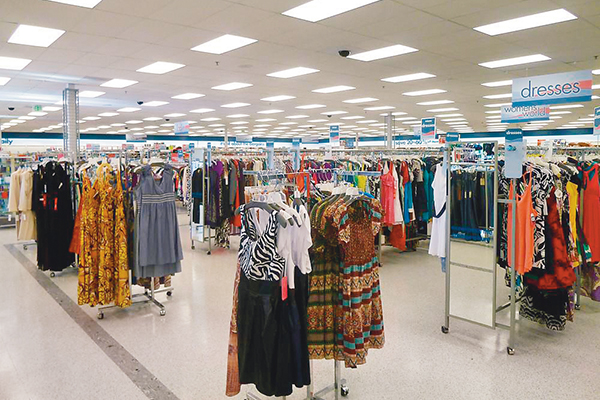Retailers look for clever ways to keep stores clean—and save money
By: Mary Lou Jay
Clean stores are essential to bringing in business. In a survey from ISSA — The Worldwide Cleaning Industry Association — 95 percent of shoppers reported unclean restrooms, unpleasant odors, dirty floors, spills, stains
So FMs are trying different approaches to keep stores clean and customers happy.
The Container Store previously outsourced once- or twice-weekly cleaning for its 92 locations. “But that became a challenge with scheduling,
“Our employees clean, vacuum, dust the store and clean the bathrooms,” Hernandez said. “Our staff is more hands-on and dedicated to the cleanliness of their store; they take ownership of it.” A vendor still handles the stores’ quarterly carpet cleaning. “A few managers had requested the employees do this, as they preferred to do it themselves instead of managing a provider who was inconsistent,” Hernandez added.
Ross Stores has some unique challenges in maintaining its 1,700 Ross and dd’s Discounts retail locations, said Joshua Witte, RFMP, Director of Store Operations, Brand Maintenance
So, Ross is asking employees to pick up the slack. “We have an initiative where we are shifting tasks from the janitorial companies to our associates in an effort to creatively manage cleaning budgets,” Witte said. Staff members do light work, such as cleaning entrance glass, jewelry cases
Janitorial crews perform the heavier work. “We’re taking the resources we have and focusing them on very specific parts of the store—restrooms, fitting rooms and front of
Ross is also considering reducing the number of service days in its lower-volume stores.
Creative Cleaning
One retailer that continues to rely
But the continual janitorial staff turnover can lead to inconsistencies in meeting cleaning standards, said Alan Donohoe, Senior Manager, Store Planning and Preservation Department. “Getting people there on time is another giant challenge; they only have a certain amount of time to clean. So, if they’re late, they don’t get as much done.” At the same time, customers today aren’t as careful when they are in the store, so janitorial companies may need more workers to complete cleaning before the store opens.
Donohoe said that cleaning customer service areas every day is essential to maintain the Louis Vuitton brand. Although the retailer could reduce the frequency of the back of house cleanings, “we try not to do
Technology Impact
FMs are incorporating more sustainable products into their cleaning practices. Louis Vuitton specifies the green cleaning products that vendors use; the Container Store’s procurement department now orders more eco-friendly products, like self-dissolving cleaning fluid packets.
Some new products perform better and reduce costs. “The different types of floor
Witte considers maintenance management software an essential tool for managing corporate cleaning operations. “The trend in maintenance departments is downsizing not upsizing; you need these tools to manage your business,” he said. FMs should choose vendors carefully to keep stores in top condition, Witte added. “The cheapest isn’t always the best.”
Donohoe prefers to work with local maintenance companies. “You’re closer to the owner, who is the one who takes pride in what’s being done,” he explained. He recommends making a cleaning checklist that janitorial workers can easily understand and follow.
To avoid confusion, Hernandez said FMs should develop a consistent schedule of required cleaning for stores, creating a separate work order only if extra work is required for specific outlets.
However they approach the task, FMs must continue to be creative in finding ways to keep stores clean.
Janitorial Expenses
How much do you spend on cleaning services? Here are comparisons from PRSM’s 2017 Retail Facilities Management Benchmarking Report:
Want to learn more? The 2017 Retail Facilities Maintenance Industry Overview is available for purchase. Please visit prsm.com for more information.
Give Your Feedback—and Get the Next Report Free
Data collection for the 2019 Retail Facilities Maintenance Industry Overview will begin in March 2019. Participating companies will receive complimentary peer comparisons, downloadable personalized PowerPoint presentations


